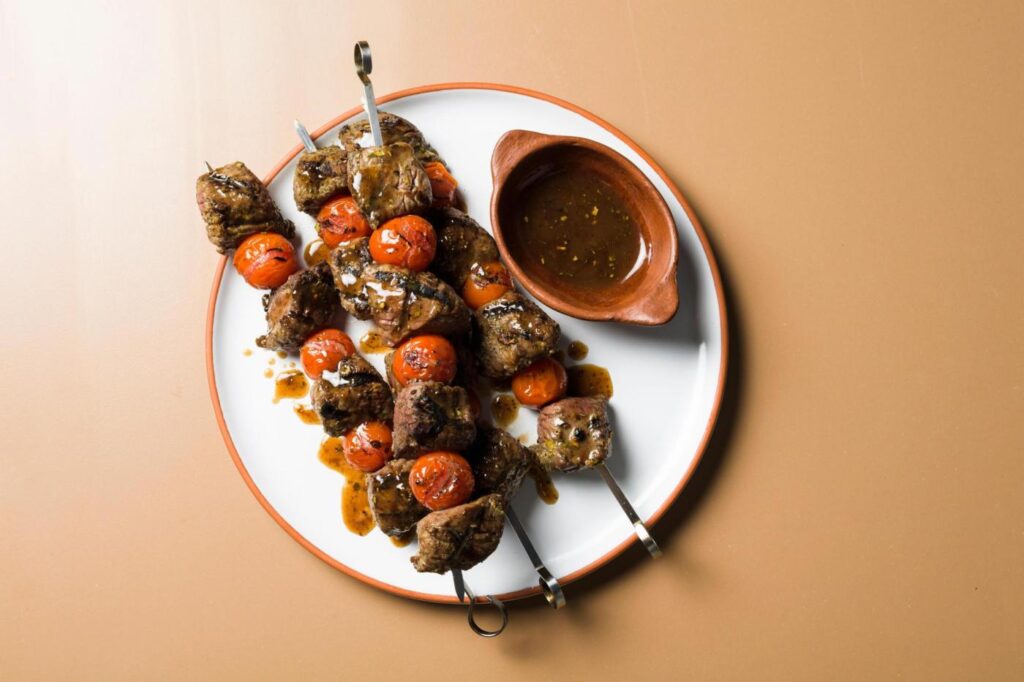
On the picturesque Portuguese island of Madeira, the traditional dish known as espetada is a culinary experience that tantalizes the senses. This classic dish involves threading chunks of beef onto fresh-cut branches of bay and cooking them over an open fire. The bay leaves infuse the beef with their distinctive menthol notes, creating a unique aroma and flavor profile.
In a modern twist on this age-old tradition, the team at Milk Street has developed a streamlined version of espetada, featured in their cookbook “Milk Street 365: The All-Purpose Cookbook for Every Day of the Year.” This adaptation uses dried bay leaves, pulverized into a fine powder, to create a seasoned salt that, when combined with garlic and olive oil, transforms the beef into a flavorful masterpiece.
The Art of Espetada
Espetada, a staple of Madeiran cuisine, is traditionally prepared by skewering beef on laurel branches. This method not only imparts a unique flavor but also pays homage to the island’s rich culinary heritage. The use of bay branches is integral, as it infuses the meat with a subtle, yet complex, aroma that is both refreshing and earthy.
In adapting this dish for modern kitchens, Milk Street’s recipe calls for metal skewers and dried bay leaves. The dried leaves are ground into a fine powder, mixed with garlic and olive oil, and used to season the beef. This approach maintains the essence of the dish while making it accessible to home cooks who may not have access to fresh bay branches.
Ingredients and Preparation
The recipe calls for a few simple ingredients: dried bay leaves, kosher salt, black pepper, garlic, olive oil, beef sirloin tips or flat iron steak, cherry tomatoes, Madeira wine, and butter. Each element plays a crucial role in building the layers of flavor that define this dish.
Start to finish: 45 minutes, plus grill prep. Servings: 4 to 6.
To begin, the dried bay leaves are combined with salt and pepper in a spice grinder and pulverized into a powder. This seasoned salt is then mixed with garlic and olive oil to form a paste, which is rubbed onto the beef cubes. The beef is then threaded onto skewers, alternating with cherry tomatoes, ready for grilling.
Cooking Techniques and Tips
The grilling process is where the magic happens. Whether using a charcoal or gas grill, the goal is to achieve a perfect char on the beef while keeping the inside tender and juicy. The skewers are cooked until the beef reaches medium-rare, with a lightly charred exterior that enhances the overall flavor.
Meanwhile, a simple Madeira reduction is prepared to finish the dish. The wine is simmered with garlic and bay salt until it reduces to a glaze-like consistency. This sauce is then enriched with butter, adding a silky texture and rich flavor that complements the grilled beef.
Expert Insights and Historical Context
Espetada’s roots in Madeiran culture are deep, reflecting the island’s agricultural heritage and the importance of communal cooking. Traditionally, espetada is enjoyed during festivals and family gatherings, cooked over open fires in a celebration of both food and community.
According to culinary historian Maria Silva, “Espetada is more than just a dish; it’s a symbol of Madeiran hospitality. The use of bay branches is a nod to the island’s natural resources and the ingenuity of its people.”
Conclusion and Culinary Exploration
This modern take on espetada invites home cooks to explore the rich flavors of Portuguese cuisine. By using readily available ingredients and adapting traditional techniques, Milk Street’s recipe offers a taste of Madeira that is both authentic and accessible.
For those looking to expand their culinary repertoire, this dish provides a perfect opportunity to experiment with new flavors and techniques. As you savor the complex layers of garlic, bay, and Madeira, you’ll be transported to the sun-drenched hills of Madeira, where food is not just sustenance but a celebration of life.
For more innovative recipes and culinary inspiration, visit Christopher Kimball’s Milk Street at 177milkstreet.com/ap.






